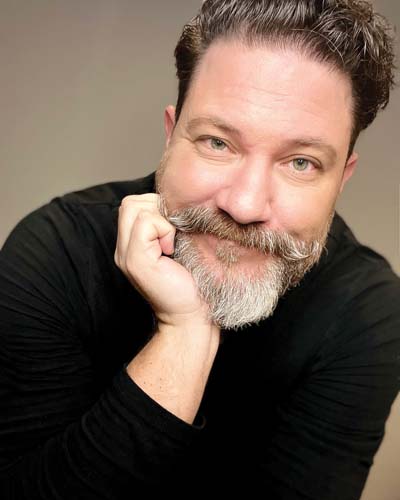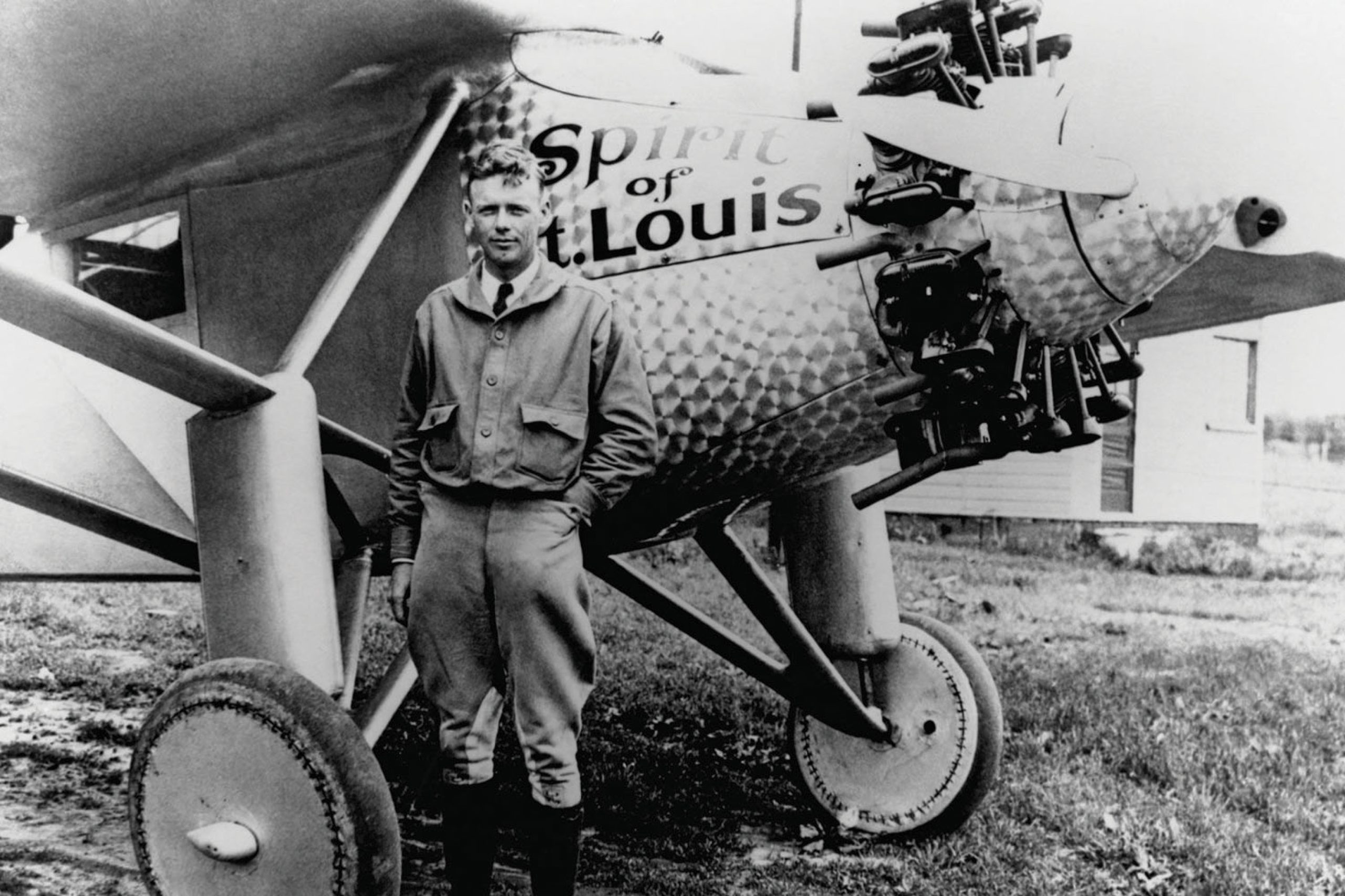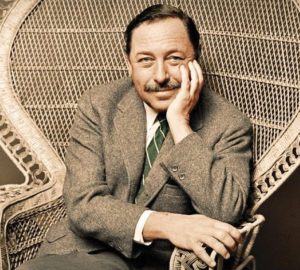kirkwood | Today, you can fly from New York to Paris in about seven and half hours, give or take 15 minutes depending on the airline, longer in unforeseeable weather conditions. You’ll probably have a nice meal, then get to sleep the rest of the way. Charles A. Lindbergh didn’t have those luxuries, of course. His 3,600-mile flight, which took the better part of two days—33.5 hours on May 20 and 21, 1927—was just about the biggest news anywhere on earth during that spring nearly 100 years ago. A replica of his single-engine propeller plane, the Spirit of St. Louis, hangs in our Missouri History Museum in Forest Park. You probably know most, if not all, of that. But there’s so much more you don’t know about the aviator, military officer, author, inventor and controversial activist. Bob Panke aims to fill in the blanks for you during his free presentation Thursday, Aug. 10 from 9 a.m. to 10 a.m. at the National Museum of Transportation. Panke’s engaging talk—“Charles Lindbergh: The Man, The Airplane, The Flight”—is the continuation of a monthly speaker series at the museum, in the southwest corner of Kirkwood. The Speaker Series is free, but registration is required due to attendance limits; please email museum@tnmot.org with questions. Now, if Lindbergh doesn’t spin your prop, consider these other events on Thursdays this fall:
- Sept. 14: Magdalene Linck, “Rhythm on the Mississippi—How Riverboats Shaped St. Louis Music in the Early 20th Century”
- Oct. 12: Emily Jaycox, “Depression-Era St. Louis Legacies on the Transportation Landscape”
- Nov. 9: Ed Dickens, who conducted the working restoration, and continues to tour, the “Big Boy” steam locomotive, Union Pacific No. 4014. (Still pending, likely via Zoom.)

the metro
What? No more wildly popular, classy, gather-at-the-water-cooler historical dramas that match the quality of Downton Abbey? No more quirky features that draw you in and keep you there despite yourself, like Antiques Roadshow? No more lively Donnybrook dialogue? And what about well-produced educational programming for kids? Well, you could just sit the youngsters down to watch Cartoon Network or Animal Planet on cable, oblivious to the likelihood the kids will switch to something not so nice as soon as you leave the room. We’re talking about free TV here, people! Its demise is a real possibility if legislation pending in Congress zeroes out federal funding for public media. A U.S. House subcommittee has released its draft fiscal year 2024 appropriations legislation that proposes to eliminate funding for staples like NPR and PBS. According to Nine Network, our metro public TV station, Americans consistently rank federal funding for public media as one of the best investments the government makes. For about $1.40 per person annually, almost every community has access to programs and services that educate, inform, inspire and entertain. Multiple studies confirm that ending funding would devastate, if not destroy, public media, resulting in the loss of programs and services—perhaps even stations going off the air. We can’t all just count on the televised fund drives that hope to persuade viewers nationwide to pony up. Or you can continue to lament the rising prices you pay for streaming services. Visit protectmypublicmedia.org.

olivette
Dad’s mind is slipping, and he doesn’t really know which pills are for what or when he’s supposed to take them. Mom’s been gone for five years, and you didn’t expect to assume the role of primary caregiver so soon. You’re not alone, of course. The CDC estimates that 19 million people 65 and older take five or more medications daily. Dad takes 10 that you know of: One pill for high cholesterol, two for clinical depression, three to control hypertension—whatever that is; oh, that’s right, high blood pressure—a pill for low potassium, an over-the-counter supplement for his joints, a probiotic, and some newfangled capsules advertised on TV to thicken hair. Does he need all this stuff, really? And what if some of them don’t play well together? Hedva Barenholtz Levy, PharmD, has written a book with some answers: Maybe It’s Your Medications: How to Avoid Unnecessary Drug Therapy and Adverse Drug Reactions. Levy wrote the 360-page book for anyone frustrated by high drug costs and who has frequent questions about the need and value of various drugs. A pharmacist and geriatric specialist, Levy asserts America has a medication problem marked by their excessive use and errors in how they are prescribed, monitored and taken. Her book could be a godsend for both layman and professional. Levy is founder of HbL PharmaConsulting, a senior-care pharmacy practice, and is an University of Health Sciences and Pharmacy adjunct faculty member. A book signing with the author is scheduled for Aug. 20 in Barnes & Noble at Ladue Crossing.
 notable neighbors
notable neighbors
westport playhouse
Zachary Stefaniak is terminally hip—at least some of the time. We met him recently for coffee, conversation and much hilarity, but he’s also one-quarter of Terminally Hip, a jazzy a cappella quartet. Hipness won’t kill him, but it may slay you, if you decide to come listen to his bass voice holding up the low end of luscious four-part harmonies when his group performs a Sunday matinee at 2 p.m. July 30 at Westport Playhouse in Maryland Heights. You might think you’re listening to the Manhattan Transfer or Pentatonix, only in real time! There’s no studio smoke and mirrors, nothing like auto tune: You’ll hear Stefaniak’s bass voice blend with those of a tenor, alto and soprano. It promises to blow your socks off, if you’re silly enough to be wearing them during a heat wave. A cappella means, of course, no instruments but the human voice. Pentatonix may have a beat-boxer for rhythm. Stefaniak depends on his vocal cords and diaphragm. “Well, I carry a pitch pipe,” he points out. “It goes in my pocket.” Plus, he possesses an uncanny ability to meld minds and voices with three compatriots: Connie Krull (soprano), who’s been dabbling in the performance arts for nearly six decades; Amalia La Violette (alto), who holds a bachelor of music education, says performing is her love; and Jamie Hutson (tenor), who’s been teaching choirs in the metro since 1999. Then, as with ‘pocketing his pitch pipe,’ Stefaniak demonstrates with his hands, but not so that Starbucks customers look up from their laptops to applaud. “Say it’s a doo-wop,” he begins. “Jamie takes off, I provide the ‘ba dum bum,’ Connie and Amalia fill in the ‘horns’.” Even his eye movements are subtle enough for an oblivious public, which Stefaniak comes by honestly—he’s been performing since childhood. Favorite shows include Hairspray! (he played Edna Turnblad), Sunday in the Park with George and The Great American Trailer Park Musical. He directed a production of The World Goes Round, and choreographed a Cabaret that received a St. Louis Theatre Circle Award nomination. So what if it’s July—we may need wintertime more than ever right about now. We wouldn’t want to put Terminally Hip on the spot, but their Christmas medley apparently is a crowd-pleaser year-round. (The four met caroling in St. Louis.) Also in their repertoire is a mix of “(Get Your Kicks On) Route 66” and a tune about I-95 that Florida-bound snowbirds might recognize; it’s akin to Bobby Troup’s paean to the highway that “winds from Chicago to L.A.” but up east, I-95 snakes through Bangor, Maine. (Jimmy Buffett’s off-color I-95 song wouldn’t be apropos in a family magazine or for the quartet; they’ve performed for retirement homes.) Terminally Hip would not be true to its name if they didn’t arrange current music for the four. Too hip to be square, they stretch out on “Uptown Funk,” the 2014 disco-pop smash by Bruno Mars and Mark Ronson. “Who knows what [song] is always a surprise,” Stefaniak exclaims. “But almost everybody sings along to ‘Sweet Caroline’!” Visit westportplayhouse.com.








